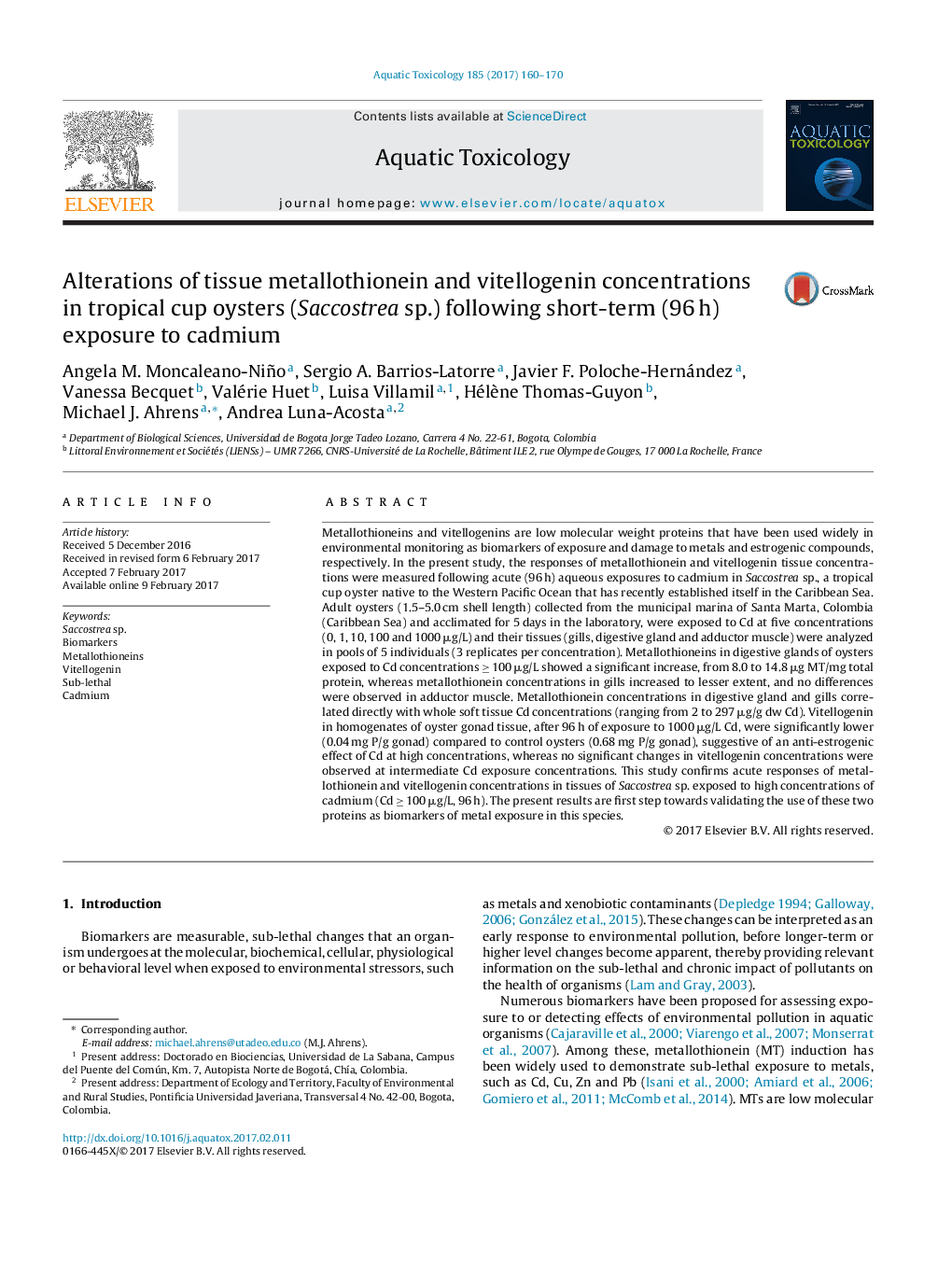| Article ID | Journal | Published Year | Pages | File Type |
|---|---|---|---|---|
| 5764254 | Aquatic Toxicology | 2017 | 11 Pages |
â¢The cup oyster Saccostrea sp. is present in Santa Marta, Colombian Caribbean.â¢96 h exposure of oysters to Cd increased metallothionein concentrations in digestive glands up to 2-fold.â¢96 h exposure of oysters to Cd decreased vitellogenin concentrations in gonads up to 6-fold.â¢Metallothionein and vitellogenin tissue concentrations correlated with whole tissue Cd concentrations.â¢Significant changes in metallothionein and vitellogenin levels were only evident at Cd concentrations above 100 μg/L.
Metallothioneins and vitellogenins are low molecular weight proteins that have been used widely in environmental monitoring as biomarkers of exposure and damage to metals and estrogenic compounds, respectively. In the present study, the responses of metallothionein and vitellogenin tissue concentrations were measured following acute (96 h) aqueous exposures to cadmium in Saccostrea sp., a tropical cup oyster native to the Western Pacific Ocean that has recently established itself in the Caribbean Sea. Adult oysters (1.5-5.0 cm shell length) collected from the municipal marina of Santa Marta, Colombia (Caribbean Sea) and acclimated for 5 days in the laboratory, were exposed to Cd at five concentrations (0, 1, 10, 100 and 1000 μg/L) and their tissues (gills, digestive gland and adductor muscle) were analyzed in pools of 5 individuals (3 replicates per concentration). Metallothioneins in digestive glands of oysters exposed to Cd concentrations â¥Â 100 μg/L showed a significant increase, from 8.0 to 14.8 μg MT/mg total protein, whereas metallothionein concentrations in gills increased to lesser extent, and no differences were observed in adductor muscle. Metallothionein concentrations in digestive gland and gills correlated directly with whole soft tissue Cd concentrations (ranging from 2 to 297 μg/g dw Cd). Vitellogenin in homogenates of oyster gonad tissue, after 96 h of exposure to 1000 μg/L Cd, were significantly lower (0.04 mg P/g gonad) compared to control oysters (0.68 mg P/g gonad), suggestive of an anti-estrogenic effect of Cd at high concentrations, whereas no significant changes in vitellogenin concentrations were observed at intermediate Cd exposure concentrations. This study confirms acute responses of metallothionein and vitellogenin concentrations in tissues of Saccostrea sp. exposed to high concentrations of cadmium (Cd â¥Â 100 μg/L, 96 h). The present results are first step towards validating the use of these two proteins as biomarkers of metal exposure in this species.
